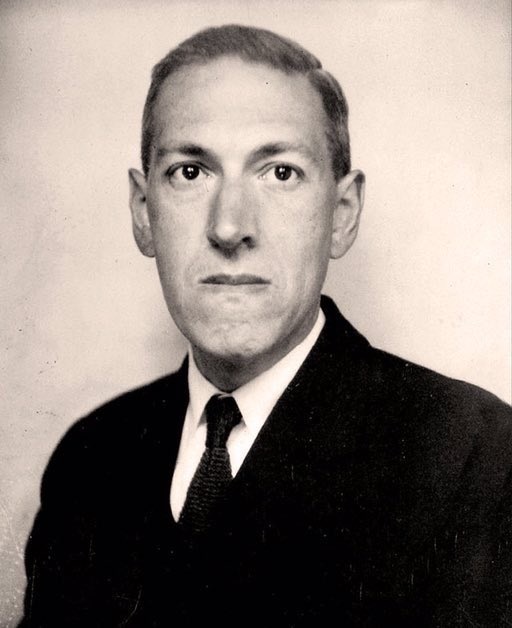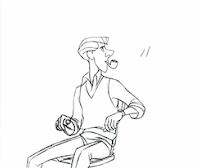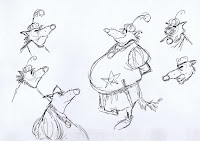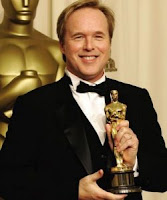Kyle Digital Media
Thursday, May 19, 2016
Documentary Reflection
Upon reflection of my progress of this project, I realized that there were a myriad of things i could've improved on in order to raise the quality of the final product. For starters, the day I recorded my audio, I felt very stuffed up in the nasal area. It definitely sounds like it, too. I also could have had a greater sense of urgency during the duration of the project. Overall, I feel that while my information was fine, my delivery of both audio and visuals were a little lacking because my knowledge of Adobe Premiere Pro is quite limited. my knowledge of the program seems even rudimentary, especially when compared to other students in my own class. Some students had more visually interesting documentaries, utilizing the full extend of their mediums, with 'key frames' and other effects of that nature. If I were to do this project again, I would frankly choose a different artist. Not to diminish the effect that Milt Kahl had on the animation industry, but there's just not much to say other than that. I think someone like Jim Henson would have been incredibly interesting to investigate. I would also work a tad bit faster on the second go. I was regretfully behind on this project almost the whole way through. Was it 'senoiritis' or just a lack of determination? Who can say, either way, I would not like to repeat this under similar circumstances. All in all, it was a challenging and interesting project to work on, and I thoroughly enjoyed it.
Thursday, April 28, 2016
Documentary script (very late... :( sorry)
MILT KAHL'S DISTINCT STYLE MADE HIM
STAND OUT IN THE WORLD OF DISNEY






ANIMATION, NOT ONLY BECAUSE OF ITS
BEAUTY, BUT BECAUSE HE COULD ADAPT
IT TO THE STYLE OF THE REST OF THE
FILM, YET STILL KEEP IT LOOKING
LIKE HIS OWN UNIQUE STYLE. BEFORE
ENTERING THE FIELD OF ANIMATION,
HE WAS AN EXPERT DRAFTSMAN, AND A
PERFECTIONIST. BUT HE SAYS HE
WOULD CONSIDER HIMSELF A PERFORMER
RATHER THAN A DRAFTSMAN. THAT IS
WHERE HE DEVELOPED THE WAY HE DREW
HOW HE DID HIS CHARACTERS. IN
CHARACTERS SUCH AS THE JUNGLE
BOOK'S SHERE KAHN AND MOWGLI,
TIGGER FROM WINNIE THE POOH,MEDUSA
IN THE RESCUERS, AND EVEN BAMBI
FROM BAMBI, HE IMPLEMENTED HIS OWN
SPIN ON THE DESIGN, MOVEMENTS, AND
OVERALL FEEL OF THE CHARACTER.
BECAUSE ANIMATION IS A TEAM
ENDEAVOR, HE HAD TO WORK WITH MANY
OTHER ARTISTS TO DEVELOP A CONCISE
STYLE OF THE FILM THEY WERE
WORKING ON AT THE TIME. HE MOSTLY
DID ANIMALS AND HUMANS THOUGH,
PARTLY BECAUSE HE WAS VERY GOOD AT
IT, AND PARTLY BECAUSE NO ONE ELSE
WANTED TO DO THEM. THAT'S
ACTUALLY WHY DISNEY'S FIRST FULL
LENGTH ANIMATED FEATURE FILM: SNOW
WHITE, HAS A HUMAN AS THE MAIN
CHARACTER. WALT DISNEY WANTED TO
CHALLENGE THE ARTISTS. BUT MILT
WAS ALWAYS UP TO THE CHALLENGE.
HE CREATED SOME OF THE MOST
VISUALLY INTERESTING , AND
PROBABLY THE MOST EXPRESSIVE
CHARACTERS OF HIS TIME.
MILT KAHL WAS ONE OF DISNEY'S
"NINE OLD MEN", A NAME GIVEN TO 9
ANIMATORS AT WALT DISNEY ANIMATION
STUDIOS WHO WERE, WELL, OLD
MEN.BUT MORE THAN THAT, THEY WERE
DISNEY'S CORE ANIMATORS. HE, AND
THE REST OF THE 9 OLD MEN ARE HAVE
ALL BEEN ACKNOWLEDGED AS DISNEY
LEGENDS IN 1989.
AS A CHARACTER ANIMATOR, MILT HAD
TO GIVE ALL OF HIS WORK
PERSONALITY. AND HIS CHARACTERS
HAD IT IN SPADES. MILT NOT ONLY
GAVE CHARACTERS A DEFINING TRAIT
IN PERSONALITY, BUT HE ALSO GAVE
THEM INDIVIDUAL GAITS, AND OTHER
MOVEMENTS, SUCH AS A WALK OR WAY
OF SPEAKING. HE TRULY MADE HIS
CHARACTERS FEEL SPECIAL AND
DIFFERENT. HE MADE HIS CHARACTERS
FEEL ALMOST... HUMAN, EVEN WHEN
THEY WERE ANIMALS, OR RATHER
ESPECIALLY WHEN THEY WERE ANIMALS.
VIBRANT AND CHARISMATIC. A PART
OF THE GREATER WHOLE OF THE FILM,
YET INDEPENDENT WITHIN THEMSELVES.
THE CHARACTERS HE SHAPED ALSO
HELPED TO SHAPE FUTURE ANIMATORS,
LIKE ANDREAS DEJA, WHO CURRENTLY
WORKS FOR WALT DISNEY ANIMATION
STUDIOS AND HAS WON THE WINSOR
MCCAY AWARD FOR OUTSTANDING
CONTRIBUTION TO THE ART OF
ANIMATION, AND BRAD BIRD, WHO WAS
DIRECTOR FOR PIXAR'S THE
INCREDIBLES AND RATATOUILLE, AND
ALSO ON THE SENIOR CREATIVE TEAM
SINCE THE FILM UP IN 2009.
BUT MILT'S IMPACT IN THE FIELD OF
ANIMATION CAN STILL BE FELT TODAY,
EVEN THOUGH HE PASSED IN 1987 AT
THE AGE OF 78. FROM CURRENT
ANIMATORS USING HIM AS INSPIRATION
TO MAKE THEIR OWN WORK BETTER OR
TO HIS FAMOUSLY HIGH STANDARDS, TO
ANIMATION PROFESSORS USING HIS
VAST LIBRARY OF WORK TO TEACH
CHARACTER ANIMATION TO THE NEXT
GENERATION OF DISNEY LEGENDS.
MILT'S DEVOTION TO THE ART OF
ANIMATION IS WHAT HAS MADE HIM
STAND OUT AS A TRUE ARTIST AND
GENIUS.
Tuesday, March 22, 2016
H.P Lovecraft
H.P. Lovecraft was born in Providence, RI in 1890. While not a media artist, he is a common influence on many, including John Carpenter and others.


Many of his literary works have been made into films, but he didn't make much money from them in his lifetime. Some of the more notable movies based on Lovecraft's works are Re-Animator, The Call of Cthulhu, and The Dunwich Horror.
But, his influence on major motion pictures is more than just adaptations. He has his own sub-genre of horror, Lovecraftian horror.
Lovecraftian horror is defined as: horror that emphasizes the cosmic horror of the unknown (and in some cases, unknowable) more than gore or other elements of shock, though these may still be present.
Examples of Lovecraftian horror include: the Alien series by Ridley Scott,and the Evil Dead series by Sam Raimi,
I have read quite a few of Lovecraft's works and I would love to make something utilizing Lovecraftian horror, as I find it more effective than its cheesy, gory, counterparts. I'd like to think that the story for my animation is Lovecraftian at least a bit.
If Lovecraft were alive today, he might have been a great director of horror films, but he needs to work on his endings if I don't say so myself.


Many of his literary works have been made into films, but he didn't make much money from them in his lifetime. Some of the more notable movies based on Lovecraft's works are Re-Animator, The Call of Cthulhu, and The Dunwich Horror.
But, his influence on major motion pictures is more than just adaptations. He has his own sub-genre of horror, Lovecraftian horror.
Lovecraftian horror is defined as: horror that emphasizes the cosmic horror of the unknown (and in some cases, unknowable) more than gore or other elements of shock, though these may still be present.
Examples of Lovecraftian horror include: the Alien series by Ridley Scott,and the Evil Dead series by Sam Raimi,
I have read quite a few of Lovecraft's works and I would love to make something utilizing Lovecraftian horror, as I find it more effective than its cheesy, gory, counterparts. I'd like to think that the story for my animation is Lovecraftian at least a bit.
If Lovecraft were alive today, he might have been a great director of horror films, but he needs to work on his endings if I don't say so myself.
Don Bluth
What a man. Animator, director, second cousin to Mitt Romney, and just look at that mustache!

Don Bluth is, and was, a visionary. He worked with Disney, made video games, and at the time, released the highest grossing non-Disney animated film (An American Tail, 1986).
His admirable filmography includes many childhood favorites, including The Land Before Time (1988), All Dogs go to Heaven (1989), and The Secret of NIHM (1982). He was only involved with the first Land Before Time film, not one of the 13 sequels. And it is 13, I checked.
His work with Disney started in 1955, as an assistant on Sleeping Beauty. He later left in 1957 to go on a mission trip to Argentina. He returned to working for Disney in 1971. His final work at Disney was the short The Small One (1978).
He went on to start his own studio with 9 other former Disney animators. Unfortunately, Don Bluth Studio filed for bankruptcy after its first and only motion picture: The Secret of NIHM .
This led to him working on an arcade game. Dragon's Lair, which players played on a LaserDisc, was a great success and led to a sequel of sorts: Space Ace.
Bluth later worked with Steven Spielberg, and then Fox Studios to make Anastasia. However, his work on the film Titan AE with studio was the last traditionally animated movie Fox would produce until 2007 with The Simpson's Movie.
He is currently working on a film adaption of Dragon's Lair.
Don Bluth is, and was, a visionary. He worked with Disney, made video games, and at the time, released the highest grossing non-Disney animated film (An American Tail, 1986).
His admirable filmography includes many childhood favorites, including The Land Before Time (1988), All Dogs go to Heaven (1989), and The Secret of NIHM (1982). He was only involved with the first Land Before Time film, not one of the 13 sequels. And it is 13, I checked.
His work with Disney started in 1955, as an assistant on Sleeping Beauty. He later left in 1957 to go on a mission trip to Argentina. He returned to working for Disney in 1971. His final work at Disney was the short The Small One (1978).
He went on to start his own studio with 9 other former Disney animators. Unfortunately, Don Bluth Studio filed for bankruptcy after its first and only motion picture: The Secret of NIHM .
This led to him working on an arcade game. Dragon's Lair, which players played on a LaserDisc, was a great success and led to a sequel of sorts: Space Ace.
Bluth later worked with Steven Spielberg, and then Fox Studios to make Anastasia. However, his work on the film Titan AE with studio was the last traditionally animated movie Fox would produce until 2007 with The Simpson's Movie.
He is currently working on a film adaption of Dragon's Lair.
Layering Investagation
Ray Harryhausen, special effects titan of the 20th century. Among his accomplishments, which are quite numerous, is the method of rear projection. It was very similar to our current green screens in what its purpose, to fill in backgrounds and add things into the shot that couldn't be in principal photography. If you've ever seen an older movie with a driving scene in it, you've probably seen rear projection in use.
The process involves taking two pictures on one piece of film to fill in blanks.


Ray Harryhausen may not have invented rear projection, but he objectively used it the best and to its fullest potential. His most famous uses of rear projection are probably Jason and the Argonauts(1963), and Clash of the Titans(1981).
Because of the prevalence and ease of use of modern technology that does its job better than rear projection ever could, it is out of use in most professional and semi-professional films. Using it with blender would be silly.
The process involves taking two pictures on one piece of film to fill in blanks.
Ray Harryhausen may not have invented rear projection, but he objectively used it the best and to its fullest potential. His most famous uses of rear projection are probably Jason and the Argonauts(1963), and Clash of the Titans(1981).
Because of the prevalence and ease of use of modern technology that does its job better than rear projection ever could, it is out of use in most professional and semi-professional films. Using it with blender would be silly.
Ralph Bakshi
Ralph Bakshi was and is a director, writer, animator and much more. While plenty of his film endeavors ended in flops, he did have a reasonable amount of success with films like Cool World (1991) and Wizards (1977). I personally know of him because of his rendition of J.R.R. Tolkien's The Lord of the Rings(1978).

Sure, there are silly moments like this one, but there is also plenty of SUPER cool, and dark imagery.

The Witch King

A Ringwraith
While Bakshi started his animation career with TV shows for children, his interests later turned to more... adult themes, we'll say. With more adult geared animated films such as Fritz the Cat (1972) and Cool World (1991), both R rated films, Fritz the Cat's tagline being "He's X-Rated and Animated!" His work not only paved the way for Peter Jackson's most popular film series and Seth McFarland's whole shtick.
Monday, March 21, 2016
Documentary Outline
1. The artist's style
He was an expert draftsman, and was mostly a character animator
2. Expressive Structure
“Milt’s drawings are very, very involved and are all about having high opinions of things,” explains honoree Andreas Deja.
He was a perfectionist, competitor, and highly opinionated man
3. Media creation techniques
Animation. He created media via animation, as was his job.
He was an expert draftsman, and was mostly a character animator
2. Expressive Structure
“Milt’s drawings are very, very involved and are all about having high opinions of things,” explains honoree Andreas Deja.
He was a perfectionist, competitor, and highly opinionated man
3. Media creation techniques
Animation. He created media via animation, as was his job.
Subscribe to:
Comments (Atom)




























